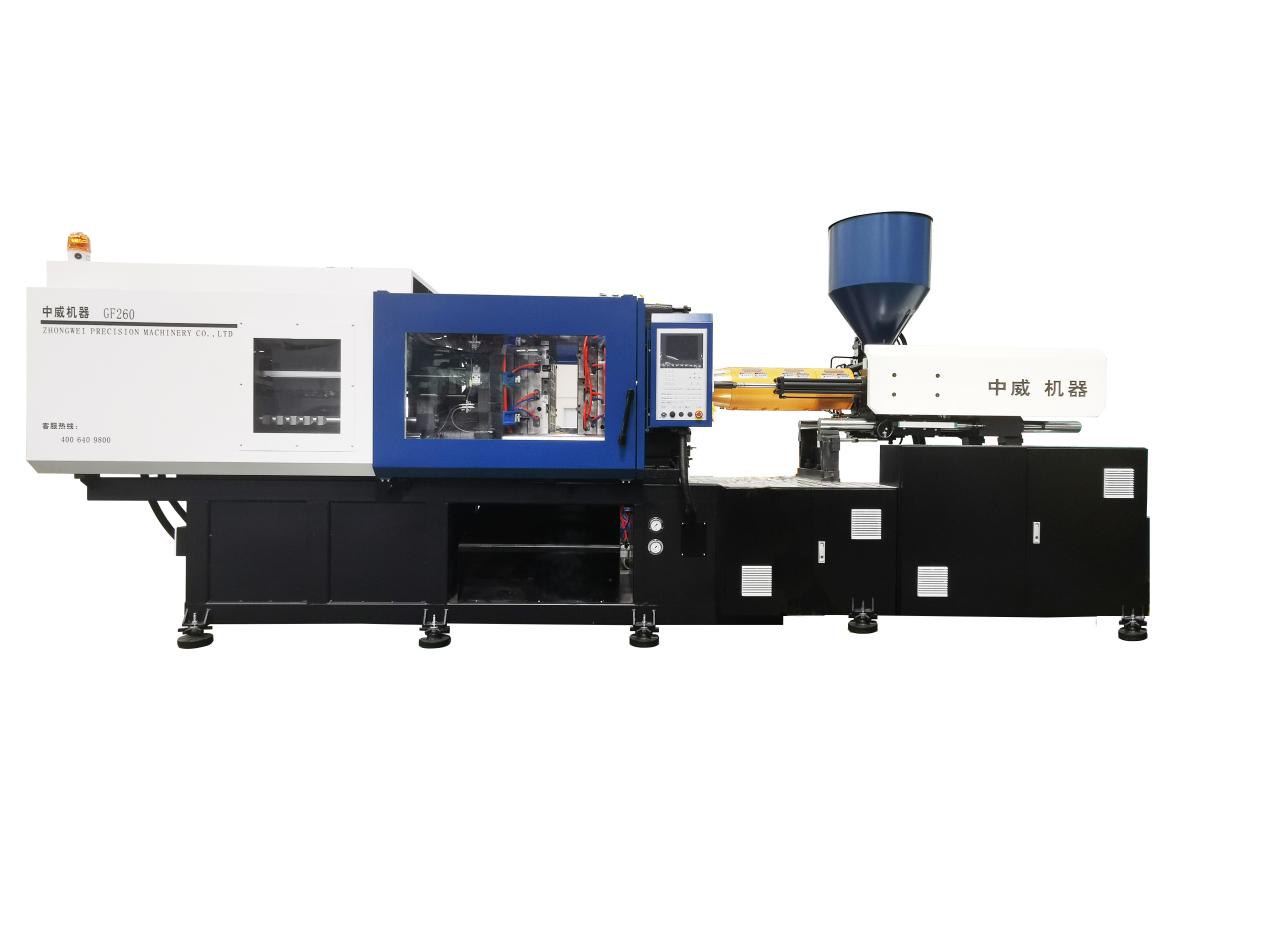260 Ton Injection Molding Machine
ZOWEITE® 260 ton injection molding machine made in China can produce PET preform, bottle cap, pvc pipe fitting, bucket lid and other products.
Send Inquiry
ZOWEITE 260 ton injection molding machine can produce PET preform, bottle cap, pvc pipe fitting, bucket lid and other products.

ZOWEITE® 260 ton injection molding machine parameter
|
Technical parameter |
GF260EH |
|||
|
Screw Diameter |
mm |
50 |
55 |
60 |
|
Screw L/D Ratio |
L/D |
20.9 |
19 |
17.4 |
|
Max. Shot Weight(PS) |
g |
475 |
575 |
684 |
|
Injection Pressure |
MPa |
242 |
200 |
168 |
|
Screw Torque & Speed |
rpm |
0-230 |
||
|
Clamping Force |
kN |
2600 |
||
|
Opening Stroke |
mm |
550 |
||
|
Space Between Tie Bars (H*V) |
mm |
590X590 |
||
|
Max. Mold Height |
mm |
600 |
||
|
Min. Mold Height |
mm |
220 |
||
|
Ejector Stroke |
mm |
160 |
||
|
Ejector Force |
kN |
62 |
||
|
Hvdaulic System Pressure |
MPa |
16 |
||
|
Pump Motor Power |
kW |
31 |
||
|
Heater Power |
kW |
15 |
||
|
Oil Tank Capacity |
L |
320 |
||
|
Machine Dimensions(approx.)(L*W*H) |
M |
6.1X1.6X2.5 |
||
260ton injection molding machine Injection Molding Defects — And How to Avoid Them?
● Brittleness: The 260ton injection molding machine mold does not have suitable strength, and will easily crack or break. Brittleness may be caused by overly dry conditions, by the overuse of recycled materials, or by mold runners that are too narrow. Remedies include decreasing the use of recycled materials, increasing runner and gate sizes, and reducing the temperature of the material closer to the melt point.
● Delamination: The finished part has visible surface layers that can be peeled. This may be caused by a mixture of incompatible materials, inconsistent material temperature, or poor mold design with right angles in the material flow path. To remedy, verify that materials are compatible and contaminant-free, increase 260ton injection molding machine mold temperature, and chamfer or remove right angles from the material flow path.
● Jetting: A deformation in the finished piece that can cause structural weakness as well as aesthetic problems. Jetting occurs when some of the molten plastic material sprays into the mold cavity before the normal flow. This initial spray cools and hardens, and prevents material flow as intended through the cavity. Jetting can be remedied by reducing injection pressure.
● Flash: Occurs when some material remains on the outside of the mold, creating a flap or excess material that must be trimmed. Most common in worn-out or poorly designed molds. Though flash can also occur due to excessive material temperature or pressure. To remedy flash, 260ton injection molding machine may need to refurbish the mold or create a new one.
● Sinks: Depressions in the surface of the piece. Sink occurs when the mold is not properly filled, and can be remedied by increasing injection pressure, and extending holding and cooling time. Sink may also occur due to mold design that inhibits proper cavity filling, so you may need to review part and mold design.
● Voids: Air bubbles beneath the surface of the finished part, which can threaten the strength and structural integrity of the part and cause it to fail. Remedy voids by increasing 260ton injection molding machine injection pressure or choosing a material with lower viscosity for improved flow.
● Splay: A cosmetic defect where moisture in the material creates streaks on the surface of the part. Rectify splay issues by guaranteeing that the mold and materials are properly dried, and that excess moisture is not present in the ambient environment.
● Bubbles/blisters: These form within the part when air cannot escape the mold cavity as the 260ton injection molding machine material is injected. Bubbles can affect the strength of the part and may create cosmetic defects. Eliminate bubbles and blisters by adding a vent to the mold, making part wall thicknesses more uniform, increasing mold temperature, or increasing injection pressure.
● Warping: A deformation where part surfaces or walls twist or bend as the part cools. It is caused by inconsistent cooling of the material, poor part design, or material that is especially likely to shrink as it cools. Remedy warpage by ensuring uniform wall thickness in part design, by adjusting material selection, and by gradually reducing mold temperature to create a smoother cooling process.
● Flow lines: Visible streaks or waves in the surface of the part, caused by inconsistent cooling of the material. This defect is especially critical when the appearance of the part is important. Solve flow line issues by increasing 260ton injection molding machine injection speed, as well as pressure and temperature, to fill the entire cavity before the material cools. Variations in wall thickness can also cause flow lines, so review part design as well.
If you have any questions, please contact me.















